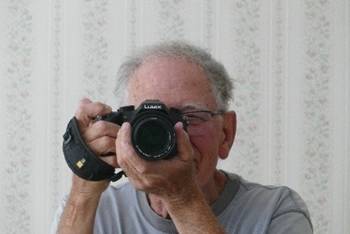Sometimes all it takes is a spark of possibility and imagination to change the way we work for the better, providing smart solutions that benefit our company and our customers. This can mean taking a fresh approach to current technology or capabilities to find an innovative way to provide more value and enhanced tools for our warfighters in the field.

Tell us about your role.
I'm a systems engineer working on sensors and electronics for armored vehicles. My background includes long-range surveillance, day and night optics, machine vision and robotics. Lately, I have been investing my time and resources in ways to transfer wideband data to the turret crew and to use new day/night video technology for safer, faster driving.
What sparked your interest in pursuing an innovative idea through the IRAD program?
My interest in the IRAD program was sparked by the possibility that non-traditional digital imaging could add General Dynamics Mission Systems—Canada fire control to smaller weapons and increase our market share. I sought a method to retrofit electronic gun aiming without redesigning existing gun mounts by taking advantage of gun barrel geometry. The IRAD program allowed me to quickly begin my research and concentrate resources on the technical work.
Tell us about your innovation.
This innovation combines a unique, on-barrel source sensed with a turret-mounted line imager to calculate precise elevation. I designed and built some optics and conducted proof-of-concept experiments in clear and degraded atmospheres. I even purchased a disco smoke generator to prove its robustness.
What has been the best part about working on this project?
The best part of the work is that "aha" moment when you see a solution is possible, with details to follow. For me, another best moment happens when that proof-of-concept actually works. It doesn't always, but failures can be super valuable, too. I also enjoy refining the physics and math behind the invention to discover and quantify what makes it robust and reliable.
What has been the most significant takeaway for you?
The IRAD program is a great example of the value to a large organization like General Dynamics Mission Systems of making small technology bets. A few survive and become the foundation of the future.
What advice would you give to others looking for innovative solutions and/or patent submissions?
Stay curious and bounce your crazy ideas off others!


